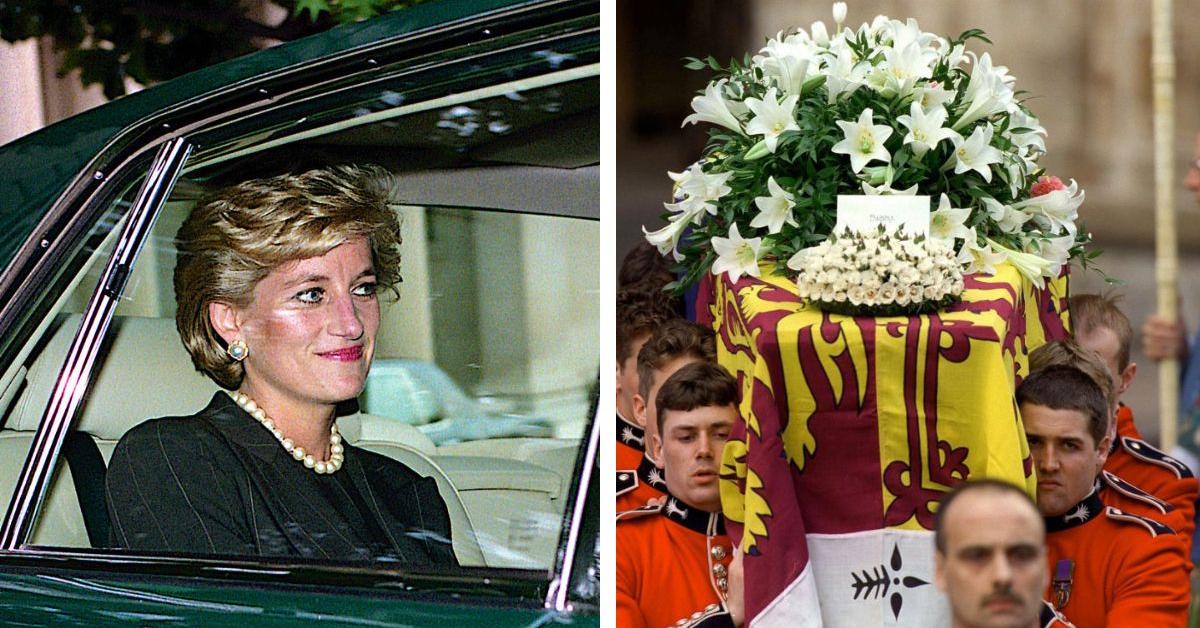Princess Diana’s death on August 31, 1997, marked a profound moment in global history. Revered for her humanitarian efforts, compassion, and relatability, Diana, Princess of Wales, left behind not only a grieving nation but also two young sons, Princes William and Harry. Despite the passing of nearly three decades, questions still linger regarding the circumstances of her death in a car crash in Paris.
Ken Wharfe, a former royal protection officer who served as Diana’s personal bodyguard from 1987 to 1993, has reflected publicly on what he believes were three fatal missteps that ultimately led to her death. Speaking in interviews and through his published works, Wharfe suggests that security failures and poor decisions that night could have been prevented—and potentially saved her life.
1. The Wrong Person Behind the Wheel

One of the central concerns raised by Wharfe was the decision to allow Henri Paul, the deputy head of security at the Ritz Hotel, to drive Diana and Dodi Fayed on the night of the crash. According to an official investigation by French authorities, Paul had consumed alcohol and prescription drugs before driving the car at high speed.
“The one thing that would have saved Diana’s life that night would have been if they’d kicked out the chauffeur and for Rees-Jones to have driven,” Wharfe stated during a retrospective interview with The Sun.
Paul was found to be more than three times over France’s legal blood alcohol limit. He was also not a professionally trained bodyguard or designated driver for the couple. Wharfe believes the presence of a trained security professional in the driver’s seat—specifically Trevor Rees-Jones—might have changed the outcome of that night.
2. Attempting to Evade the Paparazzi Without Proper Planning

In an effort to avoid paparazzi attention, Dodi Fayed’s team reportedly devised a plan that involved decoy vehicles. A Range Rover was parked in front of the Ritz Hotel to draw media attention, while Diana and Dodi slipped out the back entrance into a black Mercedes S280 with Henri Paul driving.
This uncoordinated maneuver, meant to outsmart photographers, resulted in a dangerous high-speed escape through Paris. Without collaboration with local police or a formal security escort, the vehicle sped off into the night—ultimately colliding with the 13th pillar of the Pont de l’Alma tunnel.
Wharfe criticized the lack of cooperation with local law enforcement and the decision to treat the media as adversaries rather than working within standard protection protocols.
“Had they worked with local police rather than trying to outmaneuver the paparazzi, this entire tragedy could have been avoided,” he later wrote in his memoir.
3. The Absence of a Professional Security Team

Perhaps the most heartbreaking element of Wharfe’s account is Diana’s decision to part ways with her official Scotland Yard security team following her separation from Prince Charles. At the time, Diana was no longer a full-time working royal and opted for private arrangements, including employing Dodi Fayed’s team during her time in France.
Wharfe recounted one of their final conversations before he left her protection detail. He reportedly urged Diana not to give up her official security, warning that the loss of trained professionals would leave her vulnerable.
“We had given her a sense of normality, a structure that protected her while allowing her freedom,” Wharfe explained. “But without trained professionals, she was exposed to unnecessary risk.”
According to Wharfe, the Queen or royal family could have insisted Diana retain some level of official security—even after her divorce. But because the offer was never made, Diana interpreted the silence as an opportunity to start fresh.
Remembering Diana Through Her Humanity

Wharfe, who served closely with Diana for six years, doesn’t speak only of tragedy. He also remembers her humor, her warmth, and her unique ability to connect with people regardless of status.
In his first meeting with her, Diana reportedly joked about her sons’ mischievous behavior. When Wharfe entered the room to meet her, she said: “I don’t envy you, Ken. Looking after my kids—they can be a bloody nuisance.” At that very moment, Prince William objected, and Prince Harry took a tumble from a nearby table—breaking the formality and instantly making Wharfe feel like part of a real family.
“You weren’t speaking to royalty—you were talking to a young mother,” Wharfe recalled. “That was the magic of Diana.”
Lessons Learned from a Global Tragedy
In 2008, after years of investigations and speculation, a British inquest concluded that Diana and Dodi were “unlawfully killed” due to grossly negligent driving by Henri Paul and the pursuing paparazzi.
The tragic incident emphasized the importance of professional protection for high-profile individuals and highlighted the risks of reactive decisions under media pressure.
When Safety Becomes a Personal Choice
One of the broader questions Ken Wharfe raises is whether public figures should ever be allowed to reject professional security services. Although it’s every individual’s right to decide how to live their life, the absence of protection in situations with known risk factors—such as heavy press interest or foreign travel—can have fatal consequences.
Diana’s death changed how the world viewed media intrusion, security protocols for high-profile individuals, and the role of the monarchy in protecting members of the royal family even after divorce.
Final Thoughts
Ken Wharfe’s account serves not as an indictment, but as a call for introspection. In his eyes, three key failures contributed to Diana’s untimely passing: a compromised driver, a poorly executed plan to evade paparazzi, and the lack of official protection. Whether one agrees with every detail or not, his perspective offers a deeply human, firsthand view into the events that led to one of the most mourned tragedies of the 20th century.
